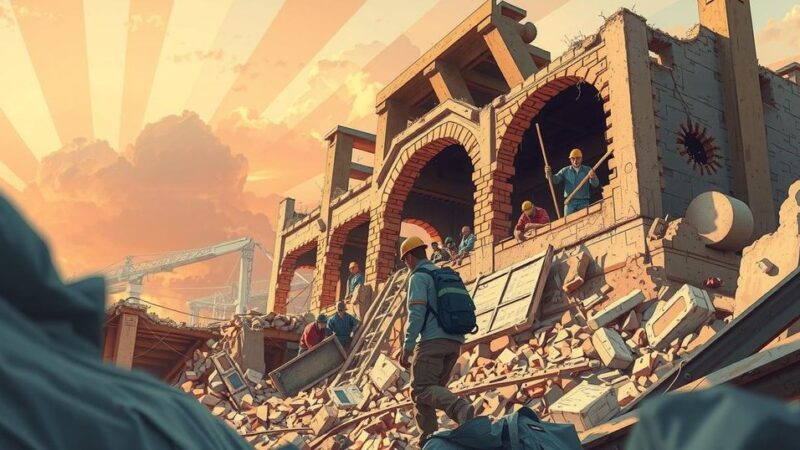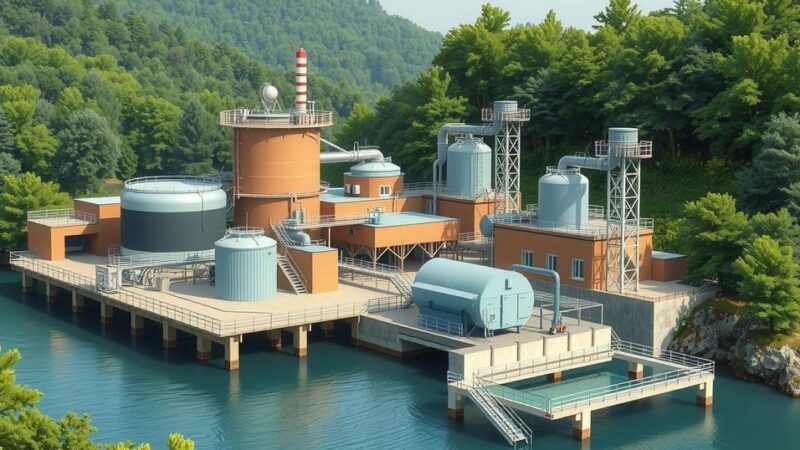A recent OECD report warns that the Paris region could incur €2.5 billion in economic damages from future droughts, particularly affecting agriculture and manufacturing. Increasing temperatures and water demands signal a need for improved water management and infrastructure. Immediate losses from potential drought conditions pose a significant economic risk, necessitating proactive strategies.
A report from the Organisation for Economic Cooperation and Development (OECD) indicates that severe droughts could cost the Paris region up to €2.5 billion by the century’s end. Although the region has not yet experienced extreme water shortages like those in cities such as Barcelona or Cape Town, climate projections foresee increasingly dire conditions, especially after 2050.
The study highlights that droughts may significantly disrupt economic activities in Île-de-France, primarily affecting agriculture and manufacturing. Jo Tyndall, the OECD Environment Directorate director, emphasized that the region’s existing infrastructure may not be sufficient to handle the severity of future drought conditions, as noted in the comprehensive report.
Île-de-France, previously deemed water-abundant due to its reservoirs and groundwater, has already seen average temperature rises of 2°C since 1990, raising the likelihood of drought occurrences. The forecast suggests that within 25 years, drought conditions might mirror those encountered in southern Europe during the late 20th century, leading to severe agricultural losses and increasingly erratic rainfall patterns.
The report underscores that water utilization has surged, particularly in agriculture, which has seen a doubling of its water needs since 2012, expected to increase by another 45 percent by 2050. Among current water withdrawals, 57 percent serves public supply, 20 percent for industry, and 3 percent for irrigation.
In the event of a severe drought similar to that of 1921, water usage restrictions affecting industry and agriculture could last over 150 days to ensure adequate drinking water. The OECD categorized potential economic damages, noting that immediate losses from industrial restrictions and crop yield declines would compose more than two-thirds of the forecasted total cost.
To tackle the rising drought risks, the report recommends comprehensive water usage assessments and better allocation strategies reflecting seasonal demands. The current regulations allow for almost unrestricted water withdrawals except during drought periods, warranting a re-evaluation of authorities’ strategies to prevent crises.
Additionally, the report addresses the potential implications of drought on the structural integrity of buildings in Paris as clay soils contract, risking significant structural damages. It also cautions about the possibility of conflicts over water usage between urban and agricultural sectors. The OECD stresses the importance of rethinking water infrastructure to incorporate methods such as rainwater capture and wastewater recycling, highlighting the urgent need for increased investment to reinforce the region’s resilience against future droughts.
In summary, the OECD report indicates that the Paris region faces serious economic threats from future droughts, potentially costing up to €2.5 billion by the end of the century. Factors such as rising temperatures, growing water demands, and insufficient infrastructure highlight the urgent need for enhanced water management strategies and investments to mitigate these risks. The consequences of inaction could severely impact the economy and societal stability in Île-de-France.
Original Source: www.rfi.fr






